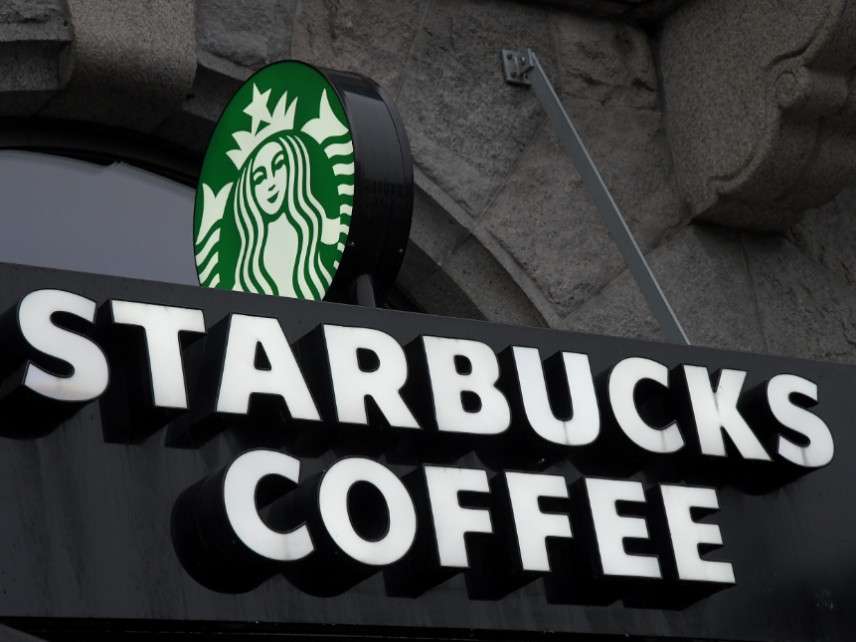Class Action Food Lawsuits Are Booming
Too much foam in your Starbucks latte? Don't worry, be litigious!

Class-action litigation targeting food companies is still a growth industry. That's the conclusion reached by attorneys with Perkins Coie, a law firm that defends many food companies facing class-action lawsuits, in its annual report on class-action food litigation, published last month. The report, Food Litigation: 2018 Year in Review, notes 2018 was "one of the most active years on record" for food class actions (or "FCAs" as I've dubbed them).
That's not a good thing. Last year, the U.S. Chamber of Commerce's Institute for Legal Reform (ILR) reported that food "class actions result from lawyers shopping for cases, not consumer fraud."
Over the years, I've written columns about some rather bizarre FCAs, including ones filed over the origins of Poland Spring water, the number of calories in Starburst candies, and the length of Subway's "footlong" subs. Too much foam in your Starbucks latte? File a lawsuit.
The Perkins Coie report shows FCAs grew in number by 9 percent last year—from 145 in 2017 to 158, tied for the highest number of suits in a year to date. The report highlights FCAs involving claims of false labeling, slack fill, and "natural" labeling, plus suits filed under Prop 65, an absurd California law that (and I'm oversimplifying only slightly) requires cancer and birth-defect warnings to appear on nearly everything and everyplace in the state.
In terms of trends, the Perkins Coie report indicates false labeling claims have grown steadily since 2015, while suits targeting slack fill (airy space in packaging) and "natural" label FCAs are down slightly. The report also notes California and New York continue to lead the way as the leading forums for filing such suits, accounting for more than three out of every four FCAs filed last year. Many of the California suits have been filed in California's so-called "Food Court," which helped spur the Orange County Register editorial board last year to dub the state America's "judicial hellhole."
Coincidentally, the same week the Perkins Coie report came out, my latest law review article, which discusses how to assess consumer perceptions of FCAs, was published in the Loyola Consumer Law Review, the only U.S. law journal dedicated solely to examining consumer-law issues. In the short article, Using Online Tools to Assess Consumer Perceptions of Class-Action Food Litigation, I study several recent FCAs around the country, starting with the aforementioned Subway lawsuit. In a methodology I repeat for each of the cases I discuss, I identified and studied a mainstream news outlet's social-media coverage of an FCA and studied consumers' stated impressions of the lawsuit.
I'd initially hoped that my research would establish guidelines that could be used to distinguish between what makes for a "good" or "bad" lawsuit. That turned out to be a far more ambitious challenged than I'd hoped. It also threatened to be an exercise in subjectivity masquerading as objectivity. With that in mind, I set out instead to assess whether and how consumers distinguish between what makes for a "good" or "bad" FCA.
That's important question for several reasons. First, FCAs—and calls to reform or limit them—are proliferating. Second, no one—scholars, judges, attorneys, or policymakers—really has a good idea what consumers think about class-action lawsuits. Third, since FCAs (and class actions generally) are intended in large part to benefit consumers by compensating a broad class of similarly injured persons while penalizing those who have harmed this class and discouraging others who might have one day cause similar harms, it's worth studying whether or not most consumers believe they are benefiting from (or being harmed by) such suits.
Finally, understanding consumer perceptions can help us better understand the famed and fabled "reasonable consumer." As the Perkins Coie report notes, "the 'reasonable consumer' defense remained at the forefront in decisions on motions to dismiss" FCAs. That defense, according to the relevant caselaw, considers whether or not "a significant portion of the general consuming public or of targeted consumers, acting reasonably in the circumstances, could be misled."
Based on my research, consumers are openly skeptical of FCAs. While a handful of the hundreds of social-media comments I read supported the various FCAs I studied, most commenters sided with the defendant, and many openly criticized plaintiffs' attorneys and the American judicial system that allows FCAs to flourish.
The reasonable consumer can be a powerful tool for good. Consider that a federal court dismissed that FCA targeting Starbucks, noting that a "reasonable consumer would not be misled into believing that foam does not count toward some portion of the volume of their Latte." So studying and better understanding the reasonable consumer is paramount. Doing so can and should yield better results in FCA cases. My article is a first step toward that understanding.
"As calls for class-action reforms grow," I conclude in my Loyola Consumer Law Review article, "those who establish and amend rules for; study; and participate in such litigation—among them policymakers, judges, attorneys, and scholars, respectively—should consider the perceptions and wishes of consumers to help inform the basis, shape, and parameters of any such reforms."
Perhaps only then can we fulfill the ILR's clarion call to "restor[e] common sense to food class action litigation."


Show Comments (23)